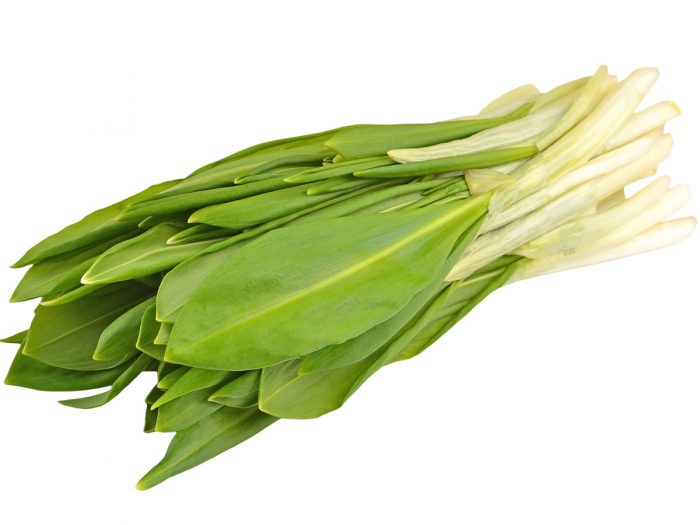Leek has been an important vegetable and cooking ingredient for hundreds of years, and these flavorful plants provide a number of nutritional benefits.
What is Leek?
A leek is a type of Allium vegetable, closely related to garlic, onions, chives, and scallions. Unlike many other vegetables, the edible part of this vegetable is a tightly wound leaf sheath that looks like the stem of the plant. The root bulb and stem base aren’t typically eaten, but the area above that, stretching all the way up to the dark green leaves at the top of the plant, is rich in flavor and nutrients. Dating back to the Egyptians, leeks have been cultivated for their intense flavor and hardiness, as they are able to grow in difficult conditions, and can even be left in the ground through the winter, where they will grow again come spring. [1]
Reaching early maturity in the autumn, these vegetables can be harvested and prepared at that point, or they can be pruned and allowed to grow even larger; namely, the stalk and leaf sheaths continue to widen. There is basically a six-month window of potential harvesting for these versatile vegetables. [2]
They are culturally relevant vegetables and have long been linked to different countries or regions, such as the UK, the Middle East and parts of India. Studies have shown that Allium species, including leeks, have been viewed as nutritionally beneficial for more than 3,000 years. [3]

A bunch of wild leeks Photo Credit: Shutterstock
How to Cut Leek?
If you want to properly enjoy leeks and incorporate them into your cooking, it is important that you know how to cut and prepare them. Due to their unique growing pattern, of having leaf sheaths tightly bound in a central “stalk”, these vegetables have very tough and stringy fibers running up and down their length. To make the food more palatable, this is a problem that must be cut or cooked around! Follow the below instructions to ensure that your leeks are easy to eat—and delicious!
- Step 1: Begin by rinsing the leeks under cool water and patting them dry with a paper towel.
- Step 2: Slice off the dark green leaves at the top of the stalk (you can save these to make a flavorful stock).
- Step 3: Cut off the root end of the leek, just before the color fully changes to light green.
- Step 4: Slice the remaining leek stalk into thin rings, approximately 5-10 mm in width.
- Step 5: Place the sliced rings into a bowl of water to remove any dirt or grit between the layers of the leaves.
- Step 6: Strain the leeks in a colander and prepare to serve, garnish or add to a recipe.
- Step 7: Alternatively, once the leaves and root ends are removed, you can slice the leeks into narrow strips.
Serving Size : Nutrient Value Water [g] 90.8 Energy 31 Energy [kJ] 130 Protein [g] 0.81 Total lipid (fat) [g] 0.2 Ash [g] 0.57 Carbohydrate, by difference [g] 7.62 Fiber, total dietary [g] 1 Sugars, total including NLEA [g] 2.11 Calcium, Ca [mg] 30 Iron, Fe [mg] 1.1 Magnesium, Mg [mg] 14 Phosphorus, P [mg] 17 Potassium, K [mg] 87 Sodium, Na [mg] 10 Zinc, Zn [mg] 0.06 Copper, Cu [mg] 0.06 Manganese, Mn [mg] 0.25 Selenium, Se [µg] 0.5 Vitamin C, total ascorbic acid [mg] 4.2 Thiamin [mg] 0.03 Riboflavin [mg] 0.02 Niacin [mg] 0.2 Pantothenic acid [mg] 0.07 Vitamin B-6 [mg] 0.11 Folate, total [µg] 24 Folate, food [µg] 24 Folate, DFE [µg] 24 Vitamin A, RAE [µg] 41 Carotene, beta [µg] 487 Vitamin A, IU [IU] 812 Lutein + zeaxanthin [µg] 925 Vitamin E (alpha-tocopherol) [mg] 0.5 Vitamin K (phylloquinone) [µg] 25.4 Fatty acids, total saturated [g] 0.03 16:0 [g] 0.03 18:0 [g] 0 Fatty acids, total monounsaturated [g] 0 18:1 [g] 0 Fatty acids, total polyunsaturated [g] 0.11 18:2 [g] 0.05 18:3 [g] 0.07 Tryptophan [g] 0.01 Threonine [g] 0.03 Isoleucine [g] 0.03 Leucine [g] 0.05 Lysine [g] 0.04 Methionine [g] 0.01 Cystine [g] 0.01 Phenylalanine [g] 0.03 Tyrosine [g] 0.02 Valine [g] 0.03 Arginine [g] 0.04 Histidine [g] 0.01 Alanine [g] 0.04 Aspartic acid [g] 0.08 Glutamic acid [g] 0.12 Glycine [g] 0.04 Proline [g] 0.04 Serine [g] 0.05 Sources include : USDA [4]
How To Cook Leeks?
At first glance, the uses of such a vegetable may seem limited, but their subtle yet unmistakably sweet flavor makes them a popular addition in many different dishes, including as a garnish for salads, and may form the basis of certain soups. They can be boiled, and lose their crunchiness, but this also reduces their fibrous nature, making them more enjoyable to eat. These vegetables can also be fried to retain more of their flavor.
Nutrition
When it comes to nutrition, leeks are very good for you, as they have a very low level of fat and cholesterol, but significant amounts of vitamin K, magnesium, manganese, copper, iron, dietary fiber, and vitamin B6. Additionally, there are moderate levels of vitamin E, vitamin A, and calcium. A single cup of cooked leeks has approximately 32 calories and is considered a low GI food. [5] [6]
As is the case in many other Allium genus vegetables, there are also a number of antioxidants and powerful organic compounds in leeks, including kaempferol, polyphenolic compounds, and flavonoids. These compounds are known to help aid in cardiovascular health and the reduction of oxidative stress, which could lower your risk of chronic disease. [7]
